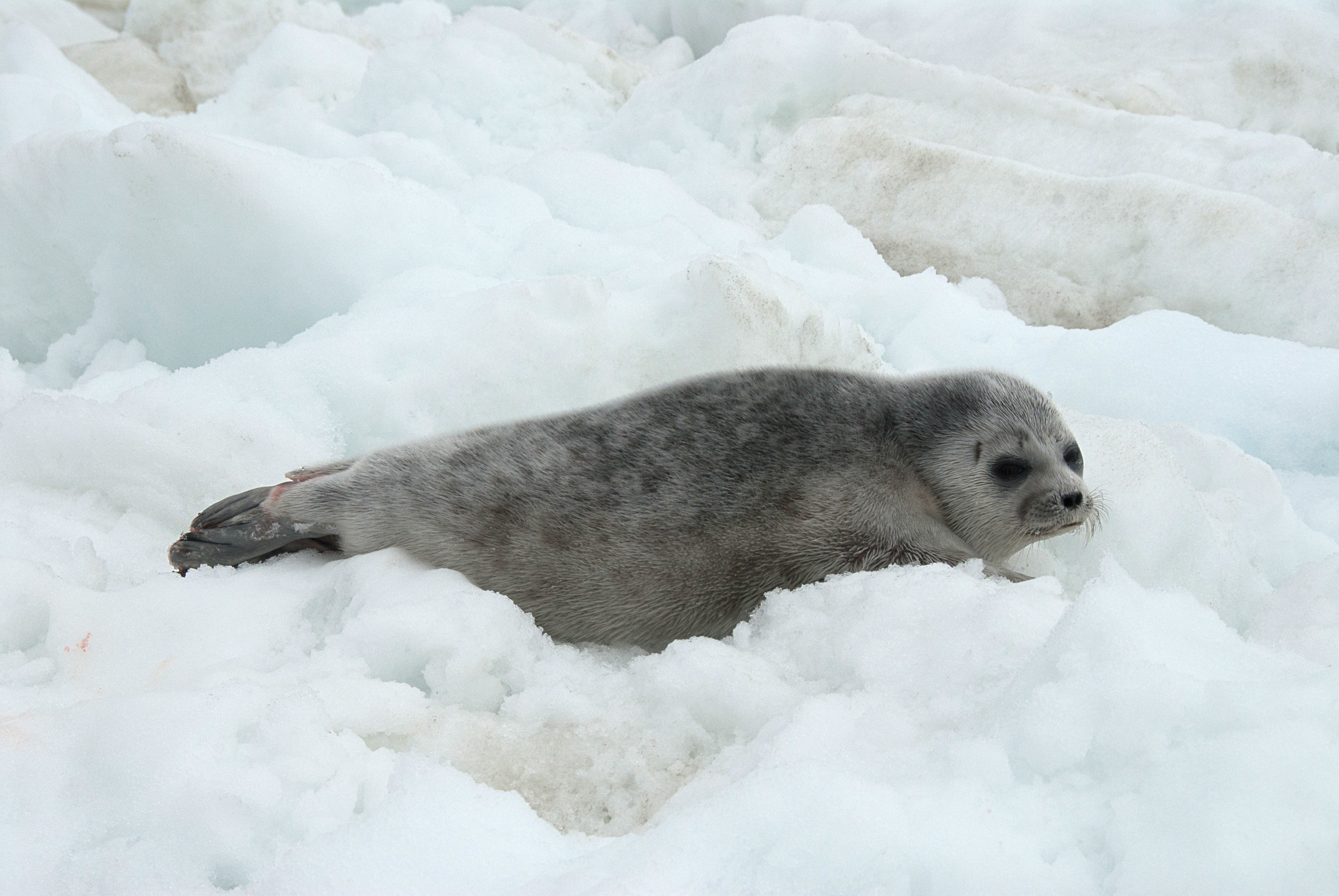Biden administration decides habitat for threatened ice-dependent seals
An area roughly the size of Texas, from the Northern Bering to Southern Beaufort seas will be critical habitat for ringed and bearded seals.

The Biden administration on Thursday announced its designation of critical habitat for two threatened species of ice-dependent Alaska seals, ending a decade-long battle over habitat protections for the Arctic marine mammals.
The National Oceanic and Atmospheric Administration’s National Marine Fisheries Service formally selected marine areas roughly the size of Texas to serve as critical habitats for bearded seals and ringed seals. The designated critical habitat for each seal species stretches from the northern Bering Sea to the southern Beaufort Sea.
Both species were granted Endangered Species Act protections in 2012 because climate change is drastically diminishing the sea ice they need for key life stages. Under the Endangered Species Act, critical habitat designations are required for all listed species; in areas so designated, special protections are required for any federally permitted or federally funded activity.
[Canada considers listing ringed seals under Species at Risk Act]
Both species of seals depend on sea ice as a platform for food foraging and for raising seal pups, as well as a form of protection against certain predators such as killer whales, according to biologists.
Ringed seals need not only ice but snow atop that ice. The snow is used for lairs to protect ringed seal pups against the elements and against predators; earlier springs and increased frequency of Arctic rain events have diminished the supply of that snow, biologists say.
While designated critical habitat for both species includes the Bering, Chukchi and Beaufort seas, the limits are slightly different for each. Bearded seal critical habitat extends farther south into the Bering than does that for ringed seals, and ringed seals’ critical habitat in the Beaufort is more extensive.
[US regulators propose habitat protections for Alaska’s threatened ice seals]
For ringed seals, the designated critical habitat in the northern Bering, Chukchi and Beaufort contains “physical and biological features essential to the conservation of the species,” says the ringed seal rule set to be published in the Federal Register on Friday. For bearded seals, the rule notes that the region that holds the Bering and Chukchi seas “is the largest area of continuous habitat” for that species, said the rule scheduled to be published on that species’ critical habitat designation.
The critical habitat designations will be put into force 30 days after the rule is published in the Federal Register, NMFS said.
The designated critical habitats replace a 2014 proposal from the Obama administration that wound up mired in litigation. The new habitat designations are slightly smaller than the 350,000-square-mile protected areas proposed in 2014. One key difference is the exclusion of much of the Beaufort Sea for national security reasons, for example.
The listings themselves were controversial. Lawsuits filed by the state of Alaska, oil industry groups, the North Slope Borough and others challenged the listings as unwarranted, and they won a preliminary federal court ruling. But in 2016, the 9th Circuit Court of Appeals reinstated the threatened listing for bearded seals, and that appeals court made a similar decision in 2017 for ringed seals. The reinstatement of the listing restarted the critical habitat process for both seal species.
Environmentalists hailed Thursday’s announcement.
“This is fantastic news for these ice-dependent seals,” Emily Jeffers, an attorney with the Center for Biological Diversity, said in a statement. “We can’t save them without protecting the places they live. But as Arctic sea ice continues to disappear, we need bolder action. Bearded and ringed seals could go extinct if we don’t dramatically reduce greenhouse gas emissions and phase out Arctic oil and gas drilling.”
The Center for Biological Diversity was a key player in the listings and the ensuing critical habitat designation. The center in 2008 filed the original petition to grant Endangered Species Act listing to the seals, and it followed up with other actions defending the listings. In 2018, the center struck a settlement with the government that produced a pledge to designate critical habitat for the ringed and bearded seals.
However, other groups have fought not just the critical habitat designations but the listing itself.
Opponents include the state of Alaska, which argued that Endangered Species Act protections will inhibit economic activity like oil development.
On Thursday, the state reiterated its opposition to the listings and blasted the resulting critical habitat designation.
“Listing these robust and healthy seal populations was unjustified,” Alaska Department of Fish and Game Commissioner Doug Vincent-Lang said in a statement. The designation of critical habitat is likewise “unnecessary and unjustified,” Vincent-Lang said in the statement. “Overly large critical habitat provides little to no conservation benefit yet adds another layer to the already complex federal bureaucracy in the waters off Alaska,” he said.